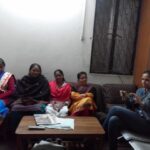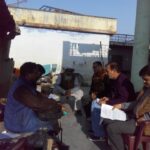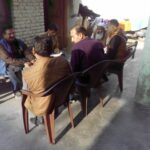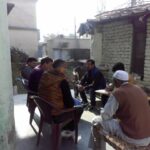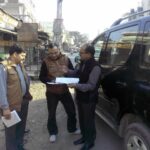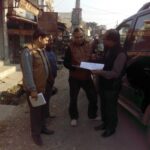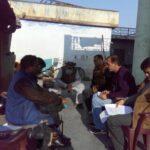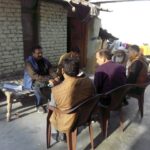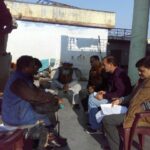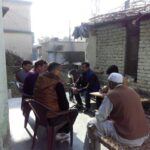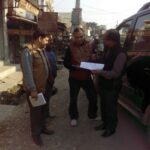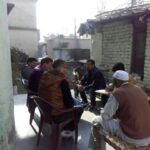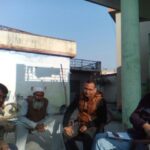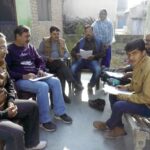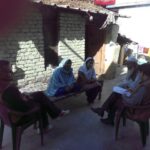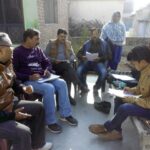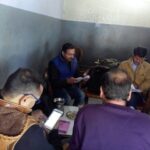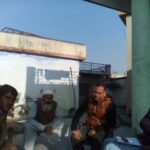DEVELOPING A COMMUNICATION STRATEGY FOR URWSSP
DEVELOPING A COMMUNICATION STRATEGY FOR UTTARAKHAND RURAL WATER SUPPLY & SANITATION PROJECT FOR PERI-URBAN AREAS
(WORLD BANK ASSISTED PROJECT)
INTRODUCTION AND BACKGROUND OF THE PROJECT
The inception of this project is a response to the prevalent communication gaps that persist within concurrent water and sanitation (WatSan) projects. Despite the existence of communication tools and strategies, ineffective communication practices have impeded the realization of objectives across numerous projects. With the intent to rectify this challenge, the project has been designed to formulate an all-encompassing communication plan and strategy, serving multifaceted purposes. This overarching strategy aims to disseminate awareness among a diverse array of stakeholders, encompassing grassroots-level operatives, decision-makers, accountable agencies, consultants, and contractors. The goal is to offer comprehensive insights into the scope and progress of the WatSan projects. Moreover, the project seeks to actively engage individuals directly affected by or beneficiaries of the WatSan initiatives, ensuring that their concerns are acknowledged and addressed. In parallel, the project envisions involving these beneficiaries in on-the-ground monitoring activities, thus serving as a crucial checkpoint to ensure that the projects align with their expectations and needs.
The overarching objective of the project is to elevate the communication practices within WatSan projects, intensify stakeholder involvement, and secure the seamless execution of these vital endeavours. By bridging the existing communication gap, the project strives to guarantee that the projects accomplish their intended goals and extend their benefits to the communities they serve. To facilitate the effective implementation of the proposed Water Supply and Sanitation Program across peri-urban regions in targeted districts, the State Water and Sanitation Mission (SWSM) is poised to undertake a comprehensive study for the development of an integrated communication strategy. This study is positioned as an integral component of the larger project preparation process, specifically aligned with the adoption of the ‘Program for Results’ (PforR) framework. This approach is set to be implemented across seven districts out of the total thirteen within the state. Given the transformative nature of the PforR approach, necessitating a departure from conventional delivery mechanisms, the project underscores the imperative for proactive endeavours aimed at generating interest and enhancing the capacities of all key stakeholders involved.
AIMS AND OBJECTIVES OF THE PROJECT
1. Devise a comprehensive communication plan and strategy designed to effectively achieve the project’s objectives.
2. Establish heightened awareness and understanding among stakeholders, with particular emphasis on those actively engaged at the grassroots level.
3. Include the systematic dissemination of project details to key decision-makers, pertinent agencies, field-level functionaries, consultants, and contractors involved in the initiative.
4. Promote active engagement of beneficiaries in on-site monitoring endeavours, fostering a sense of ownership and enabling valuable feedback on project progress.
5. Construct a well-structured framework that outlines the responsible agency, resource prerequisites, and comprehensive resource mapping necessary for the successful execution of the devised plan and strategy.
6. Precisely define the modes, channels, and corresponding timelines for communication to ensure efficient and timely implementation.
7. Develop a robust framework that encompasses all stakeholders relevant to the project, ensuring seamless and effective communication among them.
8. Nurture a culture of shared ownership and collaborative synergy among stakeholders by employing well-crafted communication methodologies.
9. Discern and select the appropriate communication tools and platforms that best facilitate the successful execution of the project and foster meaningful engagement with stakeholders.
COMPONENTS AND ACTIVITIES OF THE PROJECT
1. Conduct a comprehensive assessment of the existing communication strategies, tools, and practices implemented across various stakeholder levels within concurrent water and sanitation (WatSan) projects.
2. Identify gaps and shortcomings within the current communication plan and ascertain the specific requisites of each distinct stakeholder group involved.
3. Formulate tailored communication strategies that are finely tuned to the requirements of each stakeholder level, meticulously aligned with the various milestones of the program.
4. Precisely define key messages, optimal timing for communication, and appropriate channels that ensure impactful engagement with each segment of stakeholders.
5. Design well-structured communication plans catering to the unique needs of each category of stakeholders, guaranteeing their active participation and timely access to information.
6. Devise a strategic approach that seamlessly integrates stakeholder communication activities with the core components and milestones of the program.
7. Customize communication plans to effectively address the distinct needs and perspectives of each stakeholder group, acknowledging their diverse roles and expectations.
8. Ensure a holistic engagement approach by facilitating comprehensive involvement, facilitating robust information sharing, and fostering engagement across all stakeholder levels throughout the entire duration of the WatSan project.
9. Elevate project outcomes by cultivating robust stakeholder engagement strategies and fostering effective communication practices that span the entire lifecycle of the WatSan project.
TARGET AREA OF THE PROJECT
The study endeavours to enhance communication practices within concurrent water and sanitation (WatSan) projects throughout the state of Uttarakhand, with a particular emphasis on four pivotal districts namely Dehradun, Haridwar, Nainital, and Udham Singh Nagar.
TARGET GROUPS AND BENEFICIARIES OF THE PROJECT
The assignment has discerned various target groups for its communication strategy, encompassing panchayat representatives, households, political leaders, media professionals, and other stakeholders within the designated districts. To formulate an efficacious communication plan, the project team has conducted interviews with these groups to assimilate their viewpoints and insights.
FUNDING PARTNER OF THE PROJECT
The funding for the study was provided by the State Water & Sanitation Mission (SWSM), Department of Drinking Water & Sanitation, Government of Uttarakhand, Dehradun. The SWSM is supported by the World Bank in its efforts to improve the water supply and sanitation services in the state of Uttarakhand.
SANCTIONED BUDGET OF THE PROJECT
The SWSM approved the project in 2016, with Contract No. 01/2016-17 dated 29.09.2016. The total cost of the project sanctioned by SWSM for a duration of thirteen months was Rs. 12,95,338.00.
OUTCOMES AND ACHIEVEMENTS OF THE PROJECT
The successful implementation of the assignment has resulted in the following outcomes and achievements:
1. A comprehensive communication plan and strategy has been developed, which serves multiple purposes, including creating awareness among different stakeholders, sharing project information, explaining the project to affected persons or beneficiaries, involving beneficiaries in field-level monitoring activities, establishing an effective framework, and creating an inclusive environment for informed decision-making.
2. The communication plan and strategy will benefit all stakeholders involved in the project and will ensure that each stakeholder group is fully involved, informed, and engaged throughout the WatSan project’s lifecycle, resulting in improved project outcomes.
3. The study team has identified any gaps in the existing communication plan and better understood the needs of each stakeholder group.
4. The key messages, communication timing, and appropriate channels for reaching each stakeholder group have been identified, ensuring that each stakeholder group is effectively engaged and informed at each stage of the WatSan project.
5. Targeted communication plans have been developed that consider the unique needs and perspectives of each stakeholder group.
6. The communication strategy for each level and type of stakeholder has been developed, suggesting the adequate activity corresponding to each of the program component and milestones.
7. The study has established an effective framework that includes the responsible agency, resource requirements, and resource mapping for implementing the plan and strategy.


